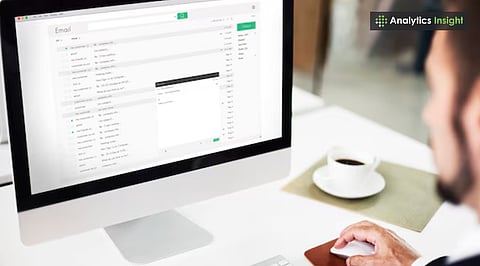

Check the sender’s address carefully to spot suspicious domains.
Avoid clicking on unknown links or downloading shady attachments.
Use Gmail’s built-in security features to flag phishing attempts.
Emails are everywhere these days, whether it’s for work, school, or just chatting with friends. But, there’s a downside: fake emails, also called phishing, are a real pain. These try to trick you into giving away personal info, like passwords or bank details, or get you to click bad links.
A Fake Email can trick users into sharing sensitive information, making awareness critical. Gmail’s got some good filters, but some still get through. Knowing how to spot them is key to keeping your emails and money safe. Guides on how to Spot Fake Emails help users recognize phishing attempts and avoid scams.
Many fake emails appear legitimate at first glance. They might even swipe a bank or company logo. But the sender's email often gives them away. For example, a real email from Gmail will always end with “@google.com.” If it’s something like “support@gmail-service.com,” watch out! Always check the domain name closely. Scammers often play with the spelling to fool you.
Strong Gmail Security features, including two-factor authentication, protect millions of users daily. Real companies usually check their emails for mistakes before they send them. Phony emails usually have poor grammar, strange phrasing, or random capitalization.
These kinds of mistakes are a big giveaway. If you receive an email claiming to be from a bank or the government but contains errors, ignore it.
Also Read: Google Confirms 2.5B Gmail Users Caught in Massive Data Breach
Scam emails usually try to fool you into clicking links. These clicks can send you to fake sites that steal what's yours. Before you click, float your mouse over the link to see where it really goes. If the link looks suspicious, with lots of random numbers, don't click it. Plus, Gmail tells you about fishy links, so watch out for those warnings.
If you lose access, Gmail Account Recovery steps ensure you can safely regain control. Be cautious of fake emails with attachments like PDFs or Word files, as opening them can install malicious software on your computer. If you're unsure who sent it or if something feels off, don't open the attachment. Real groups rarely send attachments without telling you first.
Scammers try to spook you with pressure, so watch out! They might say things like, Your account's getting blocked in a day! or You gotta act now! They want you to freak out and lose your head. Usually, real companies don't use that kind of language. If an email tries to rush you or scare you, just relax and take a closer look.
Gmail's got your back with online security that keeps those fake emails away. It excels at identifying suspicious emails and sending them directly to your spam folder. Plus, it'll give you a heads-up if a link or file seems fishy.
Spotted a phishing attempt? In Gmail, just hit those three dots and click Report phishing. That way, you're not only protecting yourself but also helping Gmail shut down scammers for everyone.
Got an email that seems to be from your bank or a store? Don't click the dang link! Just go to the website directly. Log in and check if there's really an issue. This way, you won't end up handing your info over to some crook.
Even if you accidentally click a link or enter your password on a fake site, two-factor authentication (2FA) can add extra security. With 2FA enabled, hackers can’t access your account without the code sent to your phone or authentication app. Gmail supports this, and turning it on really lowers your risk.
Also Read: How to Set Up Gmail with a Third-Party Email Client: A Simple Guide
Scammers always come up with new tricks. Reading about the latest phishing scams can help you stay alert. Google's security blog is updated frequently, and numerous cybersecurity websites share the latest tricks from scammers. Just knowing what's out there is a really good way to protect yourself from those fake emails going around.
Fake emails aren't just a pain; they're risky. They may seem legit, but often have red flags like strange email addresses, spelling mistakes, or pushy requests. If you double-check things, avoid unknown links, and enable Gmail's security features, you’ll be safer. Knowing how to spot these emails means you're less likely to get tricked.
1. Q: How can fake emails in Gmail be identified quickly?
A: By checking the sender’s address, grammar errors, and suspicious links.
2. Q: Is it safe to open attachments from unknown Gmail senders?
A: No, they may contain harmful software and should be avoided.
3. Q: What does Gmail do with suspicious emails?
A: Gmail often sends them to the spam folder or shows security warnings.
4. Q: What should be done if a phishing email is received in Gmail?
A: Report it by clicking the three-dot menu and selecting “Report phishing.”
5. Q: Can two-factor authentication help protect Gmail from scams?
A: Yes, it adds an extra layer of security even if a password is stolen.
